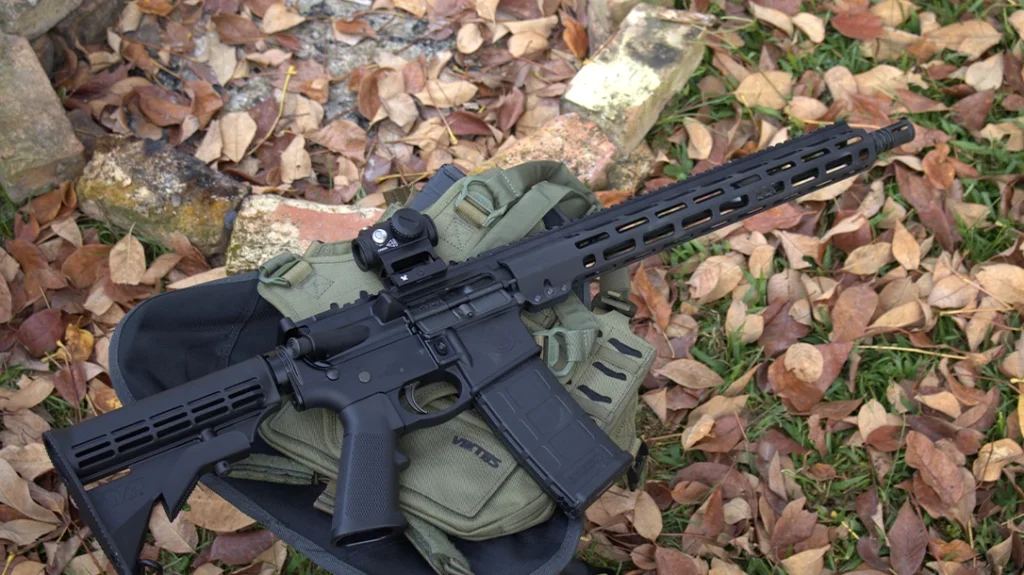The pancake-like magazine that sits atop the Century Arms DPM semi-auto is a dead giveaway to the gun’s origin. The original saw service in eight wars and performed admirably in harsh country.
One of the first new designs produced by the Soviet Union after the Revolution was the Degtyaryov Machine Gun. Introduced in 1928, it was originally designated the DP-28, an abbreviation of Degtyaryov’s Infantry Machine Gun-1928. As befitted a weapon designed for a “Workers and Peasants” army, the DP-28 was easily manufactured by semiskilled labor. The earliest models, in fact, had only 80 parts. The DP-28 was also designed to withstand hard use and to be virtually immune to dirt or mud. In tests, examples were buried in sand, dirt, or mud, then removed and fired for 500 rounds. The only part to prove fragile on the DP-28 was the bipod, which gained a reputation for breaking.
The DP was nicknamed “The Record Player” by Soviet troops because its pancake magazine resembled an old phonograph record. This disk magazine held 47 rounds and had a thin profile, allowing quite a few spares to be carried in a metal box. On the downside, the loaded magazines were heavy. Sustained fire was difficult due to a complicated loading drill: Pull back on the release located behind the rear sight, remove magazine, cock the bolt, line up a small fork at the front of the magazine with its retention slots, and slap the rear of the magazine home to seat it. This process was speeded by having a skilled loader along with the gunner. Loading the magazines was also time consuming and worked best with two people. One would hold the magazine and pull the disk around by its finger ring, while the other inserted cartridges. This process works best if some type of strap is pulled through the ring for better purchase.
Advertisement — Continue Reading Below
Another initial problem was that the recoil spring located under the barrel would overheat and lose its temper, even though the DP-28 had a relatively low cyclic rate of 500-600 RPM. The DPM model TW tested was adopted during WW II (C 1943/44) and incorporated improvements. The recoil spring was moved to the rear of the receiver where it projected into a tube. This change necessitated adding a pistol grip, which makes the DPM easier to shoot. A sturdier bipod was also added.























